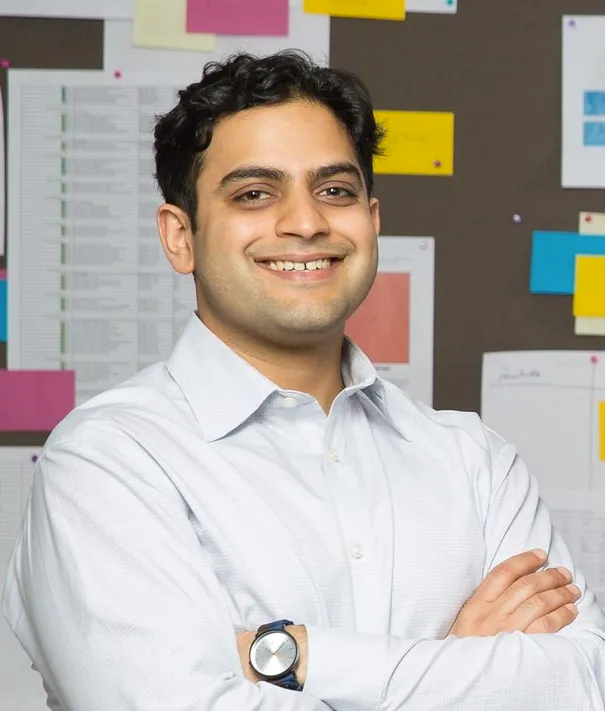AI is being used to predict staffing needs in emergency departments. And it can help determine likelihood of a patient dying.
By: Patty Winsa (Data Reporter – Toronto Star)
Scheduling nurses in the emergency department of St. Michael’s Hospital used to be a painful four-hour-a-day job. Now it’s done in 15 minutes thanks to an automated program built by data scientists at Unity Health, where a team of more than 25employees is harnessing artificial intelligence and machine learning to improve care. Unity Health includes St. Mike’s, St. Joseph’sHealth Centre and Providence Healthcare. The team has also created an early warning system that alerts doctors and nurses if a patient is at risk of going to the ICU or dying.
The programs are just two of more than 40 that have gone live since 2019, when the analytics department was founded, largely due to Dr. Tim Rutledge, Unity’s CEO, who believes the technology can dramatically change health care.
“It is perfectly clear in my mind that by harnessing data and using advanced analytics and artificial intelligence, we’re going to be able to transform health care globally,” says Rutledge. “And I really do think that we’re at an inflection point and that we’re going to really start to harness this data and make a huge difference.”
Around the world, countries are looking at how they can use artificial intelligence to improve productivity for medical staff and create better outcomes for patients in the face of a shortage of doctors, nurses and clinicians.
The technology uses “computers and machines to mimic the problem-solving and decision-making capabilities of the human mind,”as defined by IBM.
But there have been a number of concerns in health care about privacy, security and the quality of data, and the technology is still inits infancy.
“We have oceans of data in health care,” says Rutledge. “And really, up until recently in the last few years, that data hasn’t been used to its full potential.”
It’s estimated that overall, anywhere from 15 to 35 per cent of health-care hours could be automated, according to a 2020 report byMcKinsey and Co., a consulting firm, in conjunction with EIT Health, a division of the European Institute of Innovation and Technology. But where that number ultimately lands will depend on how willing the medical community is to adopt artificial intelligence, say the report’s authors.

At St. Mike’s, the use of analytics has not only reduced human effort by automating tasks, but early data shows it has played a part in decreasing deaths, says Muhammad Mamdani, Unity’s vice-president of data science and advanced analytics.
“The benefits we’re seeing have been pretty substantial,” he says.
Mamdani is head of one of the few in-hospital data science departments in Canada.
Unity founded the department with a $10-million donation from a Hong Kong philanthropist. The department is now funded through the hospital’s charitable foundation, a departure from research that is typically funded by the private sector or government.
Elsewhere in the province, artificial intelligence is being used in a project called GEMINI to measure the quality of care in general medicine wards in 30 hospitals.
General medicine wards house patients with more than one condition, which, because of advances in medicine and an aging population, is typical for the majority of patients admitted to hospital.
The research, which began in 2015, discovered that in those wards there are “large variations across our province and even within hospitals in the way patients are cared for based on who happens to be their doctor, who happens to be their care team, or maybe what hospital they happen to go to,” says Dr. Amol Verma, an internal medicine physician at St. Michael’s Hospital and co-lead onGEMINI.
The data also showed a 56 per cent rise from 2010 to 2017 in general medicine patients, an increase that has far outstripped the growth in capacity, both in beds and human resources, says Verma. This helped lead to long waits for admission from emergency departments as well as so-called hallway medicine.
As a result of GEMINI’s research, the provincial government, through Ontario Health, is funding the General Medicine QualityImprovement Network to examine the different aspects of clinical practice — such as how long a patient’s stay is, unexpected readmissions and the use of imaging and blood tests — that affect patient outcomes in hospitals.

Both projects are being led by Verma and Dr. Fahad Razak, an internist at St. Mike’s Hospital.
“This highlights lots of opportunities for us to learn from each other, for us to identify providers who are giving excellent care and try to spread and standardize really high-quality care,” Verma says.
Below we take a closer look at how data science and artificial intelligence are being used at Unity Health and Gemini.
CHARTWatch: Up and running in St. Mike’s internal medicine unit, CHARTWatch runs every hour in the background, gathering more than 100 variables about a patient, such as blood pressure, heart rate, lab results and demographic data. The data goes through a machine learning algorithm that predicts the risk of the patient going to the intensive-care unit or dying within the next 48 hours.If the patient is determined to be high-risk, the medical team is paged and responds within an hour to determine next steps.
“This is all driven by physicians,” says Mamdani. “The way our model works is that our physicians actually build these solutions with our data science team. We never do it in isolation.”
Preliminary data shows the algorithm is predicting patient outcomes at least 15 per cent better than clinicians and has resulted in a15 per cent reduction in mortality among high-risk patients.
MuScRAT: Developed for St. Mike’s multiple sclerosis clinic, the program synthesizes a patient’s years-long medical record in seconds. The program summarizes key points, including symptoms and treatments, in a one-page visual that provides links to more detailed information.
ED Volume Forecasting Tool: A patient volume-forecasting tool developed for St. Mike’s emergency department that helps determine necessary staffing levels using historical data. “What it’s telling us is when we’re going to have really bad days,” says Mamdani. “So number one, we’re mentally prepared, but also two, if we can staff up — and that’s our biggest problem right now, even if we know, it’s hard to get the right number of people — at least we’re trying to prepare better.”
COBRA: A three-day advance warning system that predicts a bed shortage because of patient demand, giving the hospital time to plan more effectively and discharge patients where they can.
Scheduling Tool: Creating a schedule for nurses in the emergency department at St. Mike’s was a constant stressor because of the rules around staffing, such as pairing a junior nurse with a senior nurse and a 48-hour limit on the time that one nurse can work with another nurse in the same zone in the department. The analytics team created a program that with a click of a button produces an optimized schedule, using the rules, for the next four days. The error rate, which refers to when scheduling rules weren’t followed, fell from more than 20 per cent, which Mamdani says is typical for many hospitals, to under five per cent.
GEMINI: GEMINI has partnered with U of T and the Vector Institute to develop a tool, using artificial intelligence, to identify hospital rates of delirium, a condition that doubles the risk of death in hospital. Delirium is acute confusion that affects up to 40 percent of older adults hospitalized for other illnesses. It is commonly caused by issues such as bladder infections, dehydration or medication and could be preventable in 20 to 40 per cent of cases with intervention, says Verma.
Rates of delirium have typically been hard to measure because of the inconsistent terms used to document the patient’s state, such as “confused” or “drowsy,” he says. The new tool captures those terms and uses information from electronic medical records to predict whether or not delirium occurred.
“What we are very excited about now is starting to be able to provide hospitals information about the rates of delirium in the different units of their hospitals,” says Verma, and to work with partners to “really make sure that the systems and services needed to prevent delirium are deployed where they are needed.”
This will “be one of the first times that artificial intelligence is used to measure the quality of health care and identify a preventable opportunity for improving quality of health care.”
